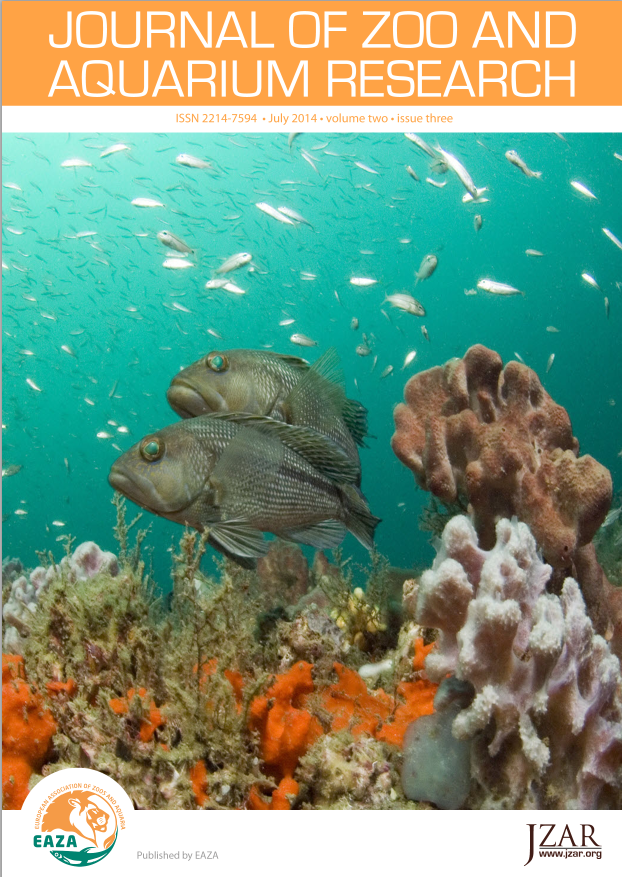Prevalence of <i>Devriesea agamarum</i> in the lizard collection of The Royal Zoological Society of Antwerp.
DOI:
https://doi.org/10.19227/jzar.v2i3.49Abstract
In recent times, Devriesea agamarum is more frequently diagnosed as the causative organism of dermatitis in lizards, particularly in spiny-tailed lizards (Uromastyx sp.). Other lizard species such as bearded dragons (Pogona vitticeps) are known as asymptomatic carriers posing a potential threat to the healthy animals in a collection. This study reports on the isolation and phenotypic identification of D. agamarum from six healthy jeweled curly-tailed lizards (Leiocephalus personatus) in the reptile collection of the Royal Zoological Society of Antwerp. Two clinical cases were presented in the same study period: a frilled lizard (Chlamydosaurus kingii) and a Philippine sailfin lizard (Hydrosaurus pustulatus). These animals had abscesses in their beaks from which rich growth of D.agamarum was obtained. It was concluded from this study that a quarantine programme for newly acquired animals is important to detect healthy carriers and prevent the spread of infection.
Downloads
Published
How to Cite
Issue
Section
License
JZAR fulfils the DOAJ definition of open access and provides free and open access to the full text of all content without delay under a Creative Commons licence. The copyright holder of JZAR publications grants usage rights to third parties, allowing for immediate free access to the work and permitting any user to read, download, copy, distribute, print, search, or link to the full texts of articles.







